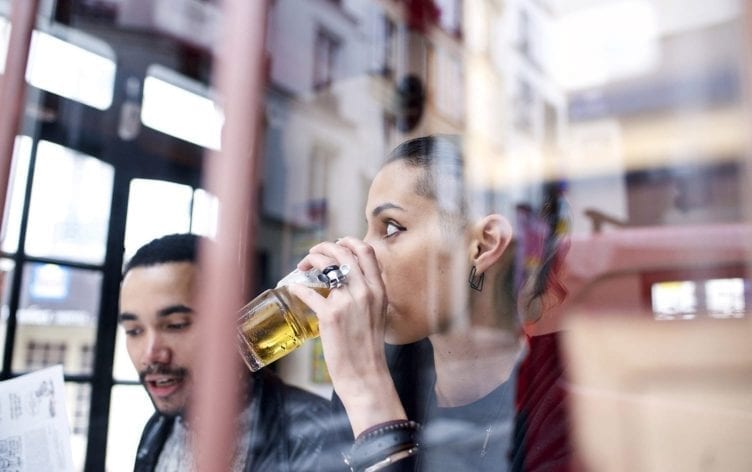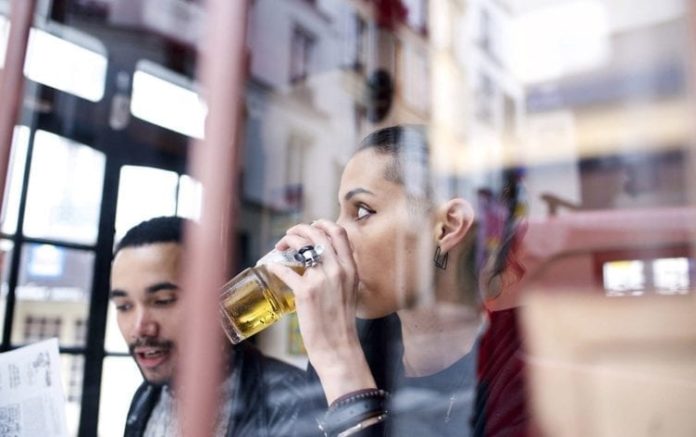
If you’re watching your weight and perusing the beer aisle, it’s tempting to buy a six-pack of light beer as a less-unhealthy option compared to regular, full-flavor beer. Research shows the soda equivalent, diet soda, may come with its own health costs — artificially-sweetened drinks have been linked to more cravings and even metabolic changes that lead to more fat storage as compared to regular soda. This begs the question of whether light beer has its own hidden downsides, or if it’s an unfair comparison.
We asked registered dietitians to explain what’s in light beer, how it compares to regular beer and whether making the switch is worth it.
IS LIGHT BEER LIKE DIET SODA?
“In my opinion, light beer is not the equivalent of diet soda,” says Bri Bell, registered dietitian and founder of Frugal Minimalist Kitchen. “Light beer has the same ingredients as regular beer, but fewer calories. Diet soda has different ingredients compared to regular soda and zero calories.”
A better comparison would be full-fat milk and 1% milk, says Bell. In milk, most calories come from naturally-occurring fats. In beer, most calories come from the alcohol content. Since 1% milk has some fat removed, it’s lower in calories, but has the same essential ingredients. Similarly, light beers just have less alcohol than regular beers, and therefore pack in less calories. In general, “darker beers with higher alcohol content are more calorie-dense than lighter-colored beers or beers with lower alcohol content,” explains Bell.
HOW DOES LIGHT BEER COMPARE TO REGULAR BEER?
“The main differences between the light and regular versions of beer are the alcohol content and the carbohydrate content, which both affect the overall calorie content,” says Bell. “Most regular beers have an alcohol content of 5–10%. With light beers, the alcohol content usually stays around 3–4%,” adds Keith-Thomas Ayoob, registered dietitian and founder of Cut to the Chase Nutrition. As far as calorie savings go, 12-ounce regular beers tend to clock in at around 140–160 calories, while light beers of the same size generally have around 100–110 calories, he says.
For example, a bottle of Coors Light is 4.2% alcohol by volume (ABV) and 102 calories. Coors Banquet, on the other hand, is 5% ABV with 147 calories. If you’re strict about your calorie-counting goals, those 45 calories could add up (especially if you’re downing more than one brew). But the difference between some light and regular beers is even slimmer: A bottle of Budweiser is 5% ABV with 145 calories, whereas Bud Light is 4.2% ABV with 110 calories.
SHOULD YOU SWAP REGULAR BEER FOR LIGHT BEER?
In short, it depends on your own personal calculation. If you’re watching your intake, light beer tends to be, well, lighter. But your buzz will be, too, which may lead you to knock back more than you would otherwise and sabotage your weight-loss efforts. “I recommend finding a beer that satisfies your craving for a beer, regardless of whether it’s light or regular,” says Bell. “If you drink a light beer instead of a regular beer to try to ‘be healthy’ but don’t even enjoy it, you basically drank it for nothing.”
THE BOTTOM LINE
While either type of beer can certainly be enjoyed in moderation as part of a healthy, well-balanced diet, “try to be mindful of quantity and portion sizes above all,” advises Ayoob. “Moderate drinking is one drink for women and two for men and you should aim to stay under these serving limits.”
While you might not get a buzz with a lighter beer, that could actually be a benefit for your waistline. “Alcohol is a disinhibitor, which means you might make decisions about food that lead you to overeat when you wouldn’t otherwise.”













